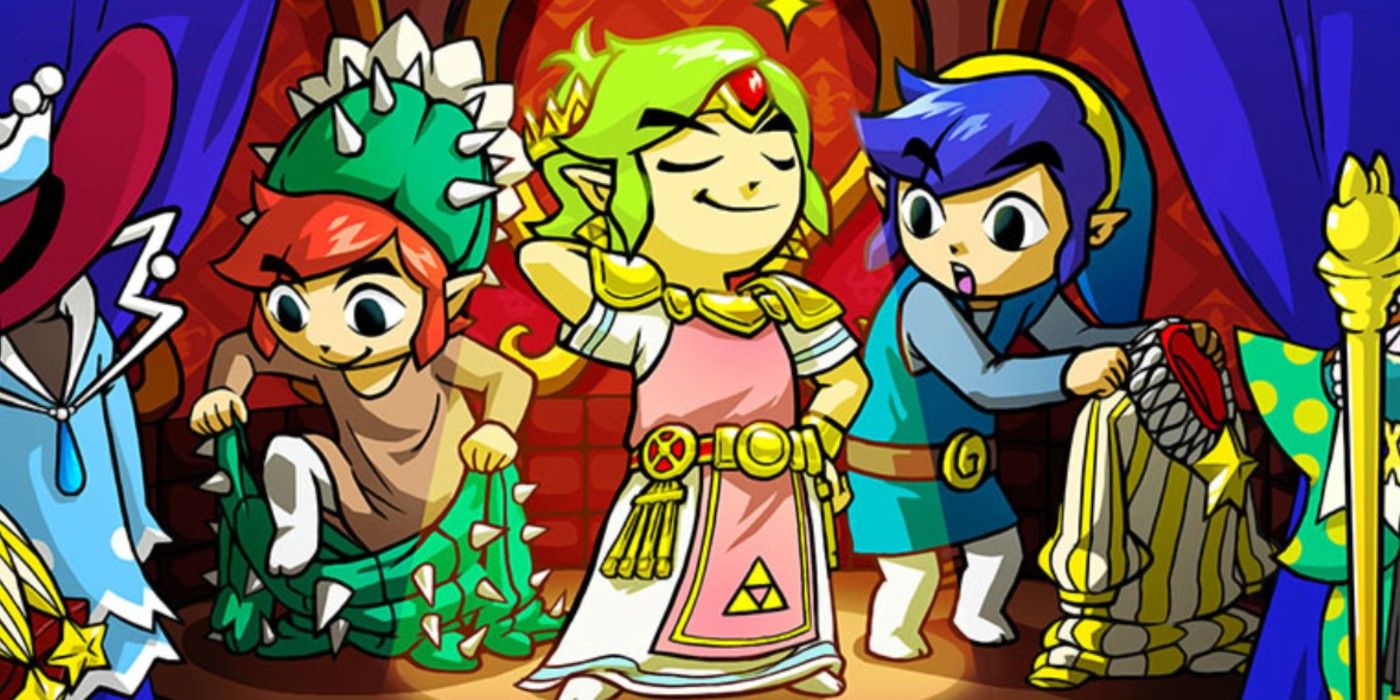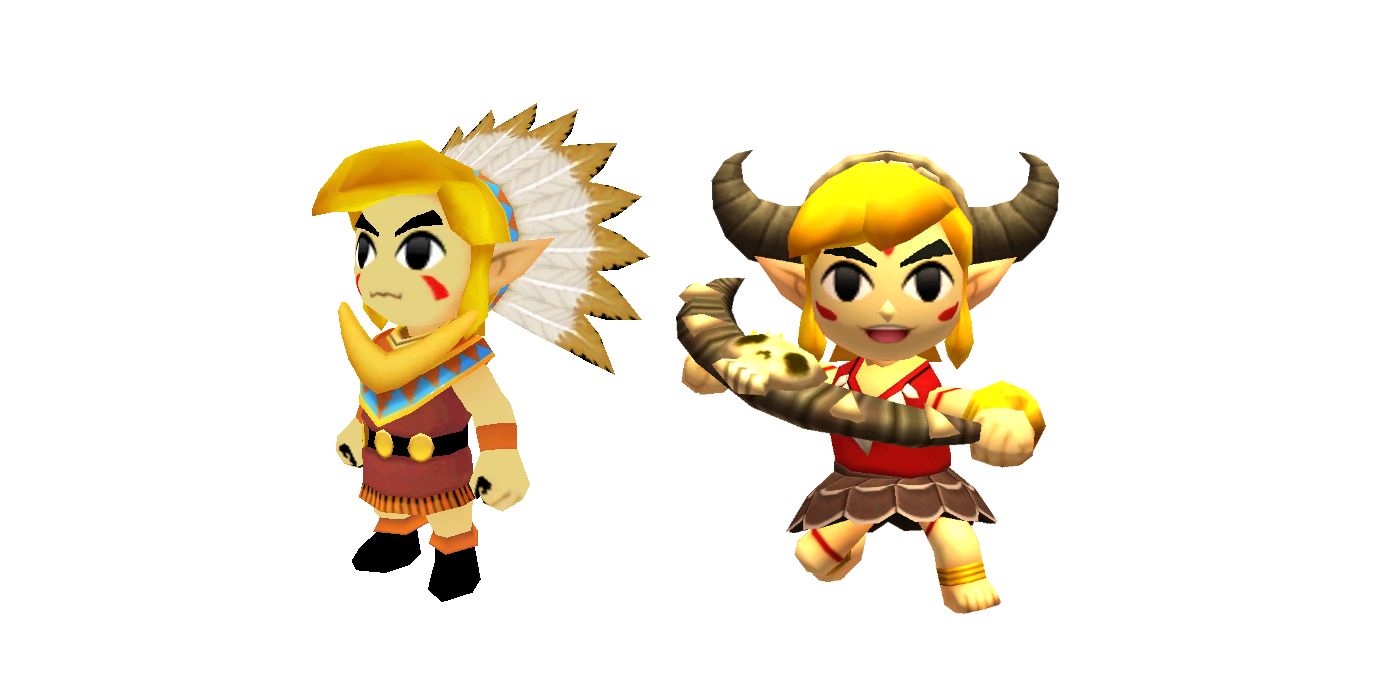A leaked demo for The Legend of Zelda: Tri Force Heroes revealed that a costume was changed during development due to its offensive nature. The Zelda series is no stranger to censorship, dating all the way back to the first game in the series.
A lot of Zelda games have been censored for their international release. These edits have included covering up the naked hippo in Link's Awakening, removing the real religious chants from the Fire Temple in Ocarina of Time, and changing the Bible in the first Zelda game into a spellbook. These types of edits were common in the early days of Nintendo games, as the company used to be incredibly strict with its content guidelines, especially when it came to religious symbols in its first-party titles.
Tri Force Heroes was a Legend of Zelda game for the Nintendo 3DS. It was one of the few multiplayer Legend of Zelda games, with three players teaming up to take on missions together. The players could unlock costumes for their version of Link, each of which had its own special attributes. One of these costumes was the Boomeranger, which increased the size and the damage of the boomerang item. The Boomeranger costume resembled a Viking outfit. According to The Cutting Room Floor, a demo of Tri Force Heroes that was shown at E3 2015 has leaked online. Fans went digging through the files of the game and they discovered that the Boomeranger costume was once very different.
Link's Original Boomeranger Costume
The Boomeranger costume in The Legend of Zelda: Tri Force Heroes was originally a stereotypical Native American outfit with a feathered headdress. These types of outfits - in games and in real life - are considered to be racist and/or culturally appropriative depictions of Native American people. It bears mentioning that a similar costume was also removed from the original Splatoon around this time, as well as in outfits from Bravely Second: End Layer, as the Tomahawk job was changed to a Cowboy.
It seems likely that the issues with the Boomeranger costume were brought up when the localization process on Tri Force Heroes begun. The Native American costume isn't going to be seen in the same way to Japanese video game developers as it would to the international audience, which is why it was present in the original version of Bravely Second and almost made its way into Splatoon. A similar outfit made its way into Mr. Game & Watch's moveset in Super Smash Bros. Ultimate, and it was removed via an update. It seems mistakes like this can still make it into the biggest Nintendo games, and The Legend of Zelda: Tri Force Heroes managed to avoid controversy by removing it before launch.
Source: The Cutting Room Floor


